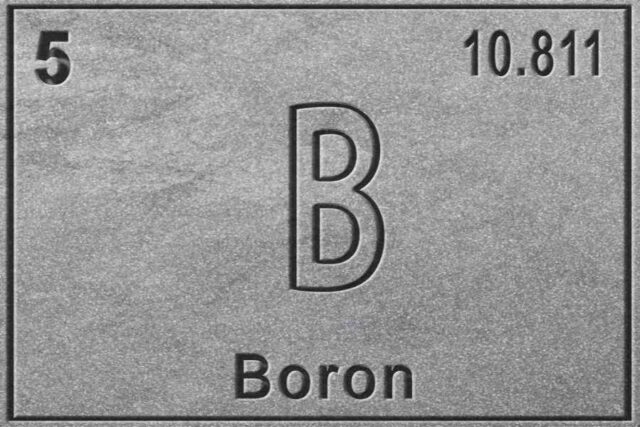Boron may be a lightweight element, but its electron configuration plays a heavyweight role in chemical understanding. As one of the simplest elements in the periodic table, boron has only five electrons. Still, knowing exactly how these electrons are arranged reveals critical insight into its chemical behavior, bonding tendencies, and placement in the p-block. Whether you’re a high school student tackling electron configurations for the first time or a college-level learner diving deeper into atomic structure, this article will answer a vital question: which is the electron configuration for boron?
Electron configurations serve as a roadmap for an atom’s structure, helping us understand reactivity, electronegativity, and periodicity. In this guide, we’ll break down the basics and progress into real-world applications, examples, and study strategies. We’ll also compare boron to neighboring elements and explore how quantum numbers play a role. If you’re asking “which is the electron configuration for boron?” this in-depth, SEO-optimized guide is designed to make the answer clear and memorable.
Which is the electron configuration for boron?
The ground state electron configuration for boron is 1s\u00b2 2s\u00b2 2p\u00b9. This means boron has two electrons in the first shell and three in the second, occupying both the s and p orbitals. It helps explain boron’s chemical behavior and its ability to form three covalent bonds in compounds like boranes and boric acid.
What Is the Basic Electron Configuration of Boron?
Boron, with an atomic number of 5, has five electrons that must be properly arranged in its atomic orbitals. Following the Aufbau Principle, electrons occupy the lowest energy orbitals first—so boron’s electrons are distributed as 1s² 2s² 2p¹. This configuration highlights the placement of electrons across energy levels and orbitals, showing that boron has two electrons in the 1s orbital, two in the 2s, and one in the 2p. Understanding this pattern is essential for grasping boron’s chemical properties and its interactions in bonding.
As a member of Group 13 in the periodic table, boron features three valence electrons. This makes it electron-deficient, often forming three covalent bonds in compounds like BF₃. The presence of just one electron in the 2p orbital allows boron to adopt unique bonding structures and participate in trigonal planar geometries. These characteristics also tie into its role as a metalloid, balancing between metallic conductivity and nonmetallic reactivity.
This configuration helps distinguish boron from nearby elements like carbon, which has a configuration of 1s² 2s² 2p². Just as a marketer might strategically use tools like Buy Quality Backlinks Cheap to strengthen their domain authority, chemists leverage knowledge of electron configurations to predict reactivity and molecular structure.
Why Does Boron’s Electron Configuration Matter?
Boron’s electron configuration may appear simple, but it holds the key to understanding the element’s reactivity and behavior in various environments. Its unique arrangement shapes how it bonds, where it sits in the periodic table, and how it’s used across industries.
Influences Chemical Reactivity
Boron’s electron configuration—1s² 2s² 2p¹—is fundamental to its reactivity. With three valence electrons, boron tends to form three covalent bonds. This behavior results in stable compounds like boron trifluoride (BF₃), where its bonding capacity is fully utilized despite its electron deficiency.
Explains Unique Bonding Behavior
Due to its incomplete octet, boron often forms unusual chemical structures. Its lone electron in the 2p orbital contributes to the element’s tendency to create trigonal planar molecular geometries. These structures are common in boron-containing compounds and highlight its departure from typical bonding patterns.
Determines Periodic Table Position
The arrangement of boron’s electrons places it in Period 2 and Group 13 of the periodic table. This position directly influences its atomic radius, ionization energy, and electronegativity. It also establishes boron as a metalloid with properties bridging metals and nonmetals.
Drives Technological Applications
Understanding boron’s electron configuration is vital for industries like electronics, glass manufacturing, and advanced materials. Its role in semiconductors, particularly as a dopant, relies on predictable electron interactions made possible by its configuration.
Strengthens Chemistry Education
For students and educators, boron serves as a model example for learning periodic trends and electron arrangement rules. Its configuration reinforces key concepts like the Aufbau Principle, Hund’s Rule, and the structure of p-block elements.
How Scientists Determine Which Is the Electron Configuration for Boron?
To accurately determine the electron configuration of boron, several fundamental rules and principles must be followed. These guidelines help define the placement of each electron in boron’s atomic structure, ensuring consistency with quantum mechanics and periodic trends. Here’s a breakdown of the essential rules:
- Aufbau Principle: This rule states that electrons fill orbitals starting from the lowest available energy level before moving to higher ones. For boron, this means filling the 1s orbital first, followed by 2s and then beginning to fill 2p.
- Pauli Exclusion Principle: According to this principle, no two electrons in an atom can have the same set of four quantum numbers. As a result, each orbital can accommodate a maximum of two electrons with opposite spins.
- Hund’s Rule: When electrons occupy orbitals of equal energy (like the three orbitals in the 2p subshell), one electron fills each orbital singly before any pairing occurs. This maximizes stability by reducing electron repulsion.
- Orbital Notation: A visual way to represent electron configuration, orbital notation uses arrows pointing up or down to indicate electron spin within boxes that represent orbitals.
- Noble Gas Shorthand: To simplify notation, boron’s electron configuration is often written as [He] 2s² 2p¹, referencing helium’s configuration as a starting point.
- Quantum Numbers: Each electron in boron is described by a unique set of quantum numbers that define its energy level, orbital shape, orientation, and spin direction.
Real-World Uses of Boron Explained Through Its Electron Configuration
Boron’s electron configuration makes it chemically distinct and industrially valuable. Its three valence electrons allow it to form strong, covalent bonds with a variety of elements. This bonding behavior leads to applications in:
Borosilicate glass, known for its resistance to thermal expansion, owes its strength to boron’s bonding capabilities. Similarly, boron is essential in high-performance magnets and as a dopant in semiconductors. These applications stem from its ability to share electrons and form stable molecular frameworks. The configuration also explains boron’s role in materials like boron carbide and its chemical activity in pharmaceuticals and agrochemicals. Its position in the periodic table and electron deficiency make it both a donor and acceptor in electron exchange.
Understanding which is the electron configuration for boron? helps professionals design compounds, optimize reactions, and predict material properties with precision.
How to Write and Remember Boron’s Electron Configuration
Writing the electron configuration for boron becomes easier when you follow a structured approach. By understanding the basic principles and using simplified notation techniques, you can accurately represent boron’s electron arrangement and recall it with confidence.
- Start with the Atomic Number: Boron’s atomic number is 5, which means it has five electrons. These electrons must be assigned to specific orbitals based on their energy levels.
- Follow the Orbital Filling Order: According to the Aufbau Principle, electrons fill orbitals starting from the lowest energy level. So, the configuration begins with two electrons in the 1s orbital, two in the 2s orbital, and the fifth electron is placed in the 2p orbital. The full electron configuration becomes 1s² 2s² 2p¹.
- Verify Using Electron Rules: Ensure your configuration aligns with the Pauli Exclusion Principle, which limits orbitals to two electrons with opposite spins, and Hund’s Rule, which favors electrons occupying separate orbitals when possible within a subshell.
- Use Noble Gas Shorthand: To simplify, you can use helium’s configuration (1s²) as a starting point. This gives boron’s condensed configuration as [He] 2s² 2p¹, which is easier to remember and write.
- Reinforce Through Visualization: Using orbital diagrams or digital learning tools helps reinforce the pattern visually, making the sequence of orbital filling easier to recall for exams or practical applications.
Final Remarks
Now that you know which is the electron configuration for boron, written as 1s² 2s² 2p¹, it’s clear how a simple atomic structure can have far-reaching effects. This configuration explains boron’s chemical reactivity, bonding tendencies, and its essential role in modern materials and technologies. Whether it’s used in semiconductors, composite materials, or chemical compounds, boron’s electron layout guides how it behaves and interacts. Mastering this concept doesn’t just help in exams—it provides a clearer understanding of atomic theory, periodic trends, and the logic behind the periodic table. With boron as a foundation, you’re better prepared to explore more complex elements and deepen your knowledge of how atoms function at a quantum level.
FAQ’s
Which is the electron configuration for boron?
The electron configuration for boron is 1s² 2s² 2p¹, which means its five electrons fill the first and second energy levels in a specific order.
What is noble gas shorthand for boron?
The noble gas shorthand for boron is [He] 2s² 2p¹, where [He] represents the core configuration of helium to simplify notation.
Why does boron have three valence electrons?
Boron’s outermost shell includes two electrons in the 2s orbital and one in the 2p orbital, giving it a total of three valence electrons.
What group and period is boron in?
Boron is located in Group 13 and Period 2 of the periodic table, placing it among elements with three outer electrons.
Is boron’s electron configuration stable?
While boron is technically electron-deficient, it achieves stability by forming covalent bonds that complete its outer shell in compounds.
How is boron used based on its configuration?
Its ability to form strong covalent bonds allows boron to be essential in glassmaking, semiconductor technology, and chemical manufacturing.














